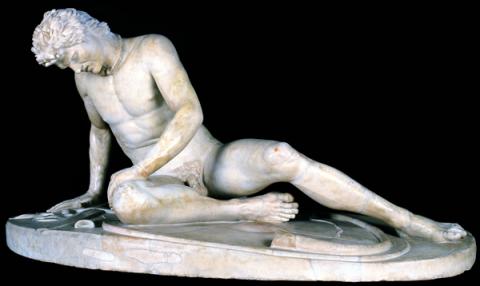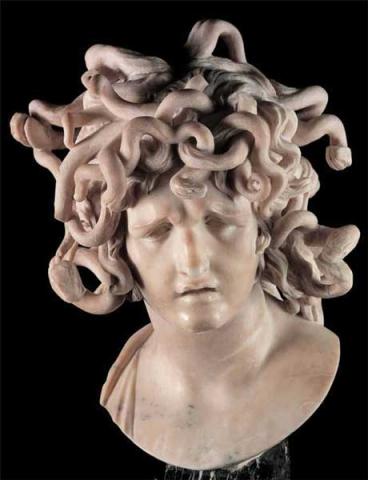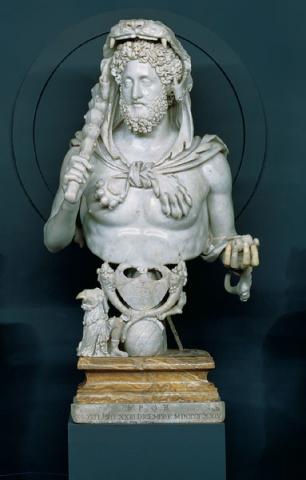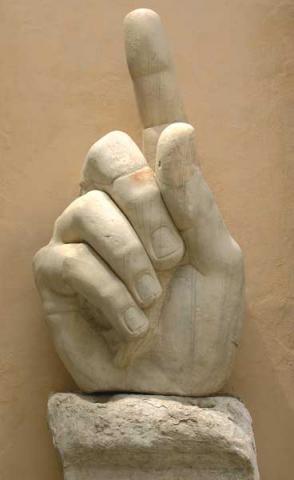Restoration of the reliefs of the Philosophers' Hall.
Restoration of the reliefs completed
Inaugurated in its renewed guise the of the Philosophers' Hall.
It was inaugurated (October 25, 2013) in the presence of the Ambassador of the Republic of Azerbaijan H.E. Vaquif Sadikov, of the Mayor of Rome, Ignazio Marino and the interim Superintendent Claudio Parisi Presicce, the Philosophers' Hall of Palazzo Nuovo of the Capitoline Museums, in its renewed guise after the restoration works that in the last six months have involved 23 architectural surveys, with an ornamental, sacred and funerary character and 5 portrait busts from the Roman period.
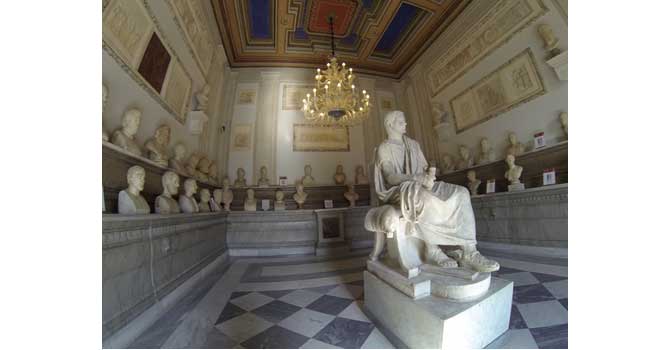
The ambassador and the mayor, after the cutting of the ribbon, stressed the excellent level of relations between the two countries by announcing their willingness to continue on the path taken by each other, actively collaborating in the field of art.
The restoration, aimed at conservation and, even more, at a better knowledge and use, was made possible thanks to the generous offer of 110,000 euros by the Azerbaijan Embassy, on behalf of the Heydar Aliyev Foundation, which has been engaged for years in the enhancement of national and international cultural heritage.
The restoration project pursued an important goal with great determination: realizing an innovative restoration for the first time highlighting and clearly distinguishing the original parts from both the eighteenth and subsequent restorations. This, through a total recovery of the original finishes, allows even to non-expert eyes to distinguish the original cores from the subsequent appeals and additions. The various phases of the intervention shed new light on the life of the works of art by providing us with information, not only of a historical nature but also of a museological and museographic nature. At the end of the works, the perception of the whole also appears to have changed: the reliefs, ancient fragments and additions appear in the authenticity of the materials in which they are made: marble, stucco, polychrome marble, thus creating an effective and new chromatic alternation.
The careful work carried out by the restorers of the CONART Consortium has therefore allowed us to better understand the quality and history of the individual reliefs, revealing details so far unpublished.
In a relief of a sarcophagus front, for example, the restoration showed how in the previous eighteenth-century restoration, the two missing lateral figures had been replaced with others made of terracotta, painted in false marble to imitate the original surface.
The confirmation of the great importance of the series came from the church of San Lorenzo outside the walls, where they were located since the Middle Ages, but certainly pertinent to an important temple building of the imperial age, characterized by the faithful presentation of all the furnishings used in religious celebrations. In one of these, the cleaning also revealed subtle graffiti made in medieval times, such as the silhouette of a man in armour and that of a dolphin.
Among the ornamental reliefs are the one with the scene of a lyre player with a cat; that of river navigation with the passage of a boat loaded with barrels under a bridge; that of an Eros on horseback; that of a horse pulling a cart.
Among the sacred reliefs, that can be all attributed to the best period of Roman art, are the beautiful relief with the goddess Hygieia in ancient red marble; the one still with Hygieia in the company of Asclepius; the one with Apollo and a Muse; the one with Diana; the one illustrated with a Bacchic scene.
Among the funerary reliefs, there are sarcophagus fronts or sides, such as the one with the myth of Meleager, whose death is also depicted on two other fragments; the one with the scene relating to the apotheosis of a boy and two depicting winged gryphons.
Finally, among the five restored Roman busts, there are specimens of great quality and importance, including a beautiful portrait of Emperor Marcus Aurelius and two beautiful male images of the middle imperial age.


























